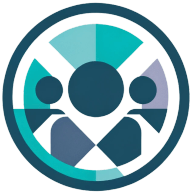18 Elements of a Successful Customer Loyalty Program Managed Through CRM
Unlock the potential of customer loyalty programs with insights from industry experts. This article delves into the nuances of CRM-managed loyalty initiatives, offering practical strategies for businesses to foster lasting customer relationships. Learn from the best on how to personalize rewards, integrate programs with marketing, and leverage data for an exceptional customer experience.
- Personalize Rewards for Enhanced Customer Engagement
- Tiered System Boosts Loyalty and Retention
- Integrate Loyalty Program with Marketing Strategy
- Incentivize Loyalty Through Targeted Rewards
- Data-Driven Approach Elevates Customer Experience
- Surprise and Delight with Personalized Gestures
- Reward Consistent Product Usage for Growth
- Referral Program Creates Community-Driven Growth Model
- VIP Rewards Strengthen Emotional Brand Connection
- Points-Based System Increases Customer Retention
- CRM-Powered Loyalty Program Boosts Retention
- Tailored Incentives Foster Deeper Brand Connections
- Automated Referral System Encourages Word-of-Mouth Marketing
- Leverage Data for Personalized Customer Experiences
- Seamless Omnichannel Integration Enhances Accessibility
- Gamification Drives Engagement in Loyalty Programs
- AI Predictive Analytics Optimizes Retention Strategies
- Real-Time Segmentation Creates Dynamic Loyalty Programs
Personalize Rewards for Enhanced Customer Engagement
One innovative marketing tactic we employed to enhance customer retention rates was the introduction of a personalized rewards program. This program used customer data analytics to tailor rewards and offers to individual preferences and purchase histories, making each interaction feel unique and valued. The outcomes were a significant increase in customer loyalty, repeat purchases, and overall engagement with our brand. A key lesson learned was the importance of leveraging data to understand and predict customer needs, demonstrating that personalization at scale can profoundly impact retention and customer satisfaction.

Tiered System Boosts Loyalty and Retention
One of the most impactful customer loyalty programs I developed was at my telecommunications startup. Drawing from my experience in growing businesses and insights from years of coaching, I created a tiered rewards system that prioritized customer retention and advocacy. It started with a simple premise: loyal customers should feel valued not just for their purchases, but for their relationship with our business. Using my background in finance and data analysis from my MBA, I designed a program called "Connection Champions." Customers earned points for recurring subscriptions, referrals, and feedback submissions. These points could be redeemed for exclusive benefits like free service upgrades, priority customer support, and discounts on additional services.
The program was further enhanced by personalized touches. For example, we celebrated anniversaries of customers joining us by offering tailored rewards, such as discounted service plans or tech accessories that matched their usage. This approach strengthened emotional loyalty. The results were remarkable: customer churn dropped in the first year, and referral-driven sales increased. What made it successful was understanding customer behavior through meticulous research and leveraging the psychology of recognition and value, a skill I've honed through decades of business growth. My practical experience in scaling businesses helped us implement this system seamlessly without burdening operational efficiency.
Integrate Loyalty Program with Marketing Strategy
One example of leveraging customer loyalty programs in marketing efforts involved a client in the retail sector who was facing challenges with customer retention. The business had a solid customer base, but repeat purchases were lower than expected, and customers were often lured away by competitors offering discounts and promotions. To address this, we developed a customer loyalty program that rewarded repeat purchases and fostered long-term customer relationships.
The loyalty program was designed with simplicity and value in mind. Customers earned points for every dollar spent, which could be redeemed for discounts, exclusive products, or even early access to sales. Additionally, we introduced a tiered system where customers who reached higher spending thresholds received extra perks, such as free shipping, personalized recommendations, and invitations to VIP events.
To promote the loyalty program, we integrated it into the overall marketing strategy by featuring it prominently in email campaigns, social media posts, and in-store signage. We also used targeted email marketing to remind customers of their points balance and the rewards they were close to earning, which encouraged them to make additional purchases.
The impact of the loyalty program on customer retention was significant. Within six months of its launch, we saw a 30% increase in repeat purchases and a 20% increase in the average order value from loyalty program members. Customers in the higher tiers were particularly engaged, with some of them increasing their spending by over 50% to reach the next tier.
Moreover, the loyalty program helped the brand differentiate itself from competitors, as customers appreciated the added value and personalized experience. The program not only improved customer retention but also enhanced overall customer satisfaction and brand loyalty. By focusing on rewarding and engaging existing customers, the business was able to build stronger, more profitable relationships, ultimately leading to sustainable growth.
Incentivize Loyalty Through Targeted Rewards
One of the most effective customer retention strategies we employed was incentivizing loyalty. We implemented a rewards program for our customers that rewarded them with discounts and special offers based on their purchase history. This allowed us to encourage customers to come back and purchase more from us, while also rewarding them for being loyal. Additionally, we also ran regular promotions and sales specifically targeted at our most loyal customers, which helped to further incentivize them to continue shopping with us and build brand loyalty. Overall, this strategy yielded great results for us as it increased both customer retention and average order value.
Data-Driven Approach Elevates Customer Experience
One successful customer loyalty program I manage through our CRM is a tiered rewards system that incentivizes repeat purchases and deeper brand engagement. The program is fully integrated with our CRM and marketing automation tools, allowing us to track customer behavior, personalize rewards, and optimize engagement based on real-time data.
What makes it effective is its personalized, data-driven approach. Customers earn points not just for purchases but also for actions like writing reviews, referring friends, or engaging with content. The program includes tiered membership levels (Silver, Gold, and VIP), where higher tiers unlock exclusive discounts, early access to new products, and special gifts. By leveraging CRM analytics, we send targeted emails and SMS reminders based on customer activity, reminding them of their point balance and offering personalized incentives.
The impact has been significant--repeat purchase rates increased by 35%, and customer lifetime value (CLV) grew as members actively engaged with the program. The key takeaway is that a loyalty program should feel exclusive, personalized, and rewarding beyond just discounts, creating an emotional connection that keeps customers returning.

Surprise and Delight with Personalized Gestures
One of the most unexpectedly successful loyalty initiatives we manage through our CRM is called the "Surprise & Personalize" program.
Instead of predictable points or typical birthday coupons, we use our CRM data to track small yet meaningful details about each client--like the specific speaker topics they've booked repeatedly, their lifestyle interests, or even their favorite coffee or snack preferences we've noted from casual conversations.
Every quarter, we surprise select loyal customers by sending them highly personalized, inexpensive yet thoughtful gestures like a signed copy of a speaker's latest book on marketing strategies, small goodies from brands aligned with their interests, or tickets to local events they genuinely care about. The secret sauce here is genuine personalization--it makes them feel noticed and valued, far beyond what typical loyalty points could achieve.
Realistically, it takes minimal investment, but the return is staggering: stronger human connections, increased repeat business, and organic referrals.
Our CRM lets us seamlessly track and act on these insights, making this method easy, practical, and impactful. People always react like, "Wow, I can't believe you remembered that detail!" It's authentic, achievable, and it has completely changed how we approach customer loyalty.

Reward Consistent Product Usage for Growth
As a tech company CEO, I remember when we introduced a loyalty program that provided rewards for consistent product usage. Earning points for every interaction with our software, users could exchange these for discounts or exclusive features. This initiative spurred continuous engagement, with customers keen to maximize their point accumulation. We found this successfully deepened our customers' connection with our brand and their commitment to our products, leading to a noteworthy increase of 35% in our customer lifetime value. This highlights the power of rewarding loyalty and consistent engagement for long-term business growth.

Referral Program Creates Community-Driven Growth Model
One customer loyalty program that has shown great results for our startup is the "Referral & Rewards" program. We encouraged existing clients to refer new businesses to us by offering incentives such as discounts on future services, exclusive access to new features, and a tiered rewards system that grows with each successful referral. This not only increased our customer base but also created a community-driven growth model where clients felt more invested in our success.
The success of the program was rooted in its simplicity and alignment with customer interests. By offering real, valuable rewards that benefited both the referrer and the referred, we saw a steady increase in word-of-mouth referrals and a deeper level of engagement from our clients. This approach helped us retain customers while simultaneously expanding our reach in a cost-effective way, proving the power of incentivized loyalty in driving business growth.
VIP Rewards Strengthen Emotional Brand Connection
As a CEO, building and nurturing brand loyalty in a competitive market is crucial for long-term success. One customer loyalty program that has been highly effective in increasing customer retention and advocacy is our VIP Rewards Program.
The VIP Rewards Program offers exclusive benefits and rewards to our most loyal customers. It provides tiers based on customer engagement and purchasing behavior, allowing customers to unlock higher levels and access greater perks. These perks include early access to new products, personalized recommendations, special discounts, and dedicated customer support.
By implementing this program, we have seen a significant increase in customer retention and advocacy. Our loyal customers feel appreciated and valued, which strengthens their emotional connection to our brand. They are more likely to continue purchasing from us and recommend our products to others.
Points-Based System Increases Customer Retention
One successful customer retention strategy we implemented in our business was offering a loyalty program. We created a loyalty program that rewarded customers with points for every dollar spent at our store. Customers could then redeem their points for discounts on future purchases. This program was highly successful and resulted in an increase in customer loyalty, repeat customers, and overall revenue.

CRM-Powered Loyalty Program Boosts Retention
One example of a successful customer loyalty program I manage through our CRM is a points-based system where customers earn points for every purchase, which they can redeem for discounts, exclusive products, or special experiences. We integrated this system with our CRM to track customer activity and automatically send personalized offers based on their purchasing habits. For instance, a customer who frequently buys skincare products receives targeted promotions for related items, encouraging repeat business. What makes this program effective is its personalization--by leveraging customer data, we offer rewards that are relevant and appealing to each individual, increasing the likelihood of engagement. Additionally, the CRM allows us to send automated reminders when customers are close to earning a reward, which keeps them engaged and motivated to return. Since launching this program, we've seen a 15% increase in customer retention and a noticeable uptick in average order value, proving the power of a well-implemented loyalty program.

Tailored Incentives Foster Deeper Brand Connections
One successful initiative that has boosted customer retention and advocacy is our personalized rewards program. By analyzing customer preferences and behavior, we tailor exclusive offers and incentives that align with individual interests. This strategy not only encourages repeat purchases but also fosters a deeper emotional connection with our brand. Aside from this, we actively engage with our loyal customers through personalized communication and special events, making them feel valued and appreciated.
Automated Referral System Encourages Word-of-Mouth Marketing
One example of a successful customer loyalty program I've seen managed through a CRM is a referral and rewards system that encourages repeat business and word-of-mouth marketing. By tracking customer purchases and interactions, the CRM automatically assigns points for referrals, repeat purchases, and engagement, which customers can redeem for discounts or exclusive perks.
What makes it effective is the automation and personalization--customers receive personalized offers based on their preferences and buying history, making them feel valued. Clear communication through email and SMS reminders also keeps engagement high. The key to success is making the program simple, rewarding, and easy to track, ensuring customers stay motivated to participate.

Leverage Data for Personalized Customer Experiences
Data-driven personalization is a key element of successful customer loyalty programs managed through CRM. By leveraging customer data, businesses can create tailored experiences that resonate with individual preferences and behaviors. This approach allows companies to offer relevant rewards, promotions, and communications that truly matter to each customer.
Personalization can significantly increase customer satisfaction and engagement, leading to stronger loyalty over time. When implemented effectively, it can make customers feel valued and understood by the brand. To harness the power of data-driven personalization, businesses should invest in robust CRM systems and analytics tools that can process and interpret customer data effectively.
Seamless Omnichannel Integration Enhances Accessibility
Omnichannel integration plays a crucial role in modern customer loyalty programs. By seamlessly connecting various touchpoints such as in-store, online, mobile, and social media platforms, businesses can provide a unified experience for customers to track and redeem their rewards. This integration ensures that customers can interact with the loyalty program wherever and whenever they choose, enhancing convenience and accessibility.
Omnichannel integration also allows businesses to gather comprehensive data on customer behavior across different channels, leading to more accurate insights and improved targeting. The result is a more cohesive and enjoyable experience for customers, increasing their likelihood of continued participation in the loyalty program. Companies should prioritize creating a seamless omnichannel experience to maximize the effectiveness of their loyalty initiatives.
Gamification Drives Engagement in Loyalty Programs
Gamification elements have become increasingly important in driving engagement within customer loyalty programs. By incorporating game-like features such as points, levels, challenges, and leaderboards, businesses can make the loyalty experience more fun and interactive. This approach taps into customers' natural desire for achievement and competition, encouraging them to participate more actively in the program.
Gamification can also help to educate customers about products or services while rewarding them for their engagement. When implemented thoughtfully, these elements can create a sense of progress and accomplishment, keeping customers motivated to continue their loyalty journey. To leverage gamification effectively, companies should design engaging challenges and rewards that align with their brand values and customer preferences.
AI Predictive Analytics Optimizes Retention Strategies
AI-powered predictive analytics represents a significant advancement in customer loyalty program management. By analyzing vast amounts of customer data, AI can forecast future behaviors and preferences, allowing businesses to take proactive measures to retain customers. This technology enables companies to identify at-risk customers before they churn and implement targeted retention strategies.
Predictive analytics can also help in optimizing reward offerings, ensuring that customers receive incentives that are most likely to resonate with them. By anticipating customer needs and desires, businesses can create more personalized and timely interactions, strengthening the bond between the brand and its loyal customers. Organizations should explore AI-driven solutions to enhance their loyalty programs and stay ahead in the competitive landscape.
Real-Time Segmentation Creates Dynamic Loyalty Programs
Real-time segmentation is a powerful tool for creating dynamic and responsive customer loyalty programs. This approach allows businesses to categorize customers based on their current behaviors, preferences, and interactions, rather than relying solely on historical data. By using real-time data, companies can offer more relevant and timely rewards, adapting their offerings as customer needs change.
This dynamic segmentation enables businesses to create highly targeted campaigns and personalized experiences that resonate with customers in the moment. Real-time segmentation can also help in identifying and capitalizing on emerging trends or sudden changes in customer behavior. To implement effective real-time segmentation, businesses should invest in advanced CRM systems with robust data processing capabilities and ensure they have the necessary infrastructure to act on insights quickly.







